Like most visitors, I was overwhelmed by the staggering choice of things to do in Istanbul, Turkey, so I began with the city’s most famous sights. At Sultanahmet Park, I stood aside the central fountain and looked toward the six delicate minarets of the Sultan Ahmed Mosque, more commonly known as the Blue Mosque for the handmade ceramic blue tiles that adorn its interior walls. Swiveling 180 degrees, I beheld the four minarets and copper dome of the stunning Hagia Sophia. Completed in 537 as a Greek Orthodox Basilica, it was converted to a Roman Catholic cathedral during the Latin Empire and became a mosque after the Ottomans conquered Constantinople and renamed the city Istanbul. In 1935, it was transformed into a museum by order of Mustafa Atatürk, the first Turkish President and founder of the Republic of Turkey.
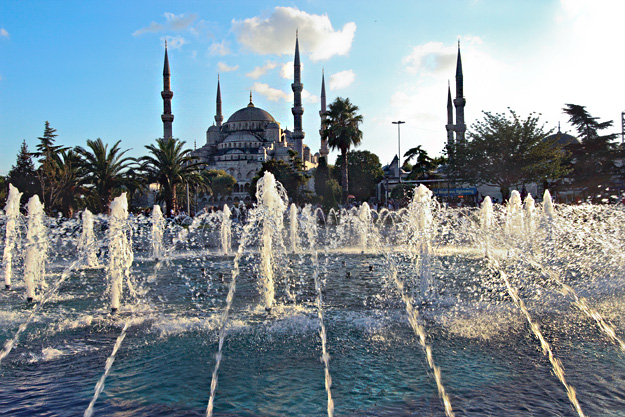

Just 500 feet from the Hagia Sophia I descended into the bowels of the Basilica Cistern, the largest of the ancient brick water tanks that lie beneath the streets of Istanbul. Today its 336 marble columns are mirrored in the few inches of water it still holds, however the fifth-century AD cistern once held 100,000 tons of water and supplied all the needs of the Topkapi Palace.
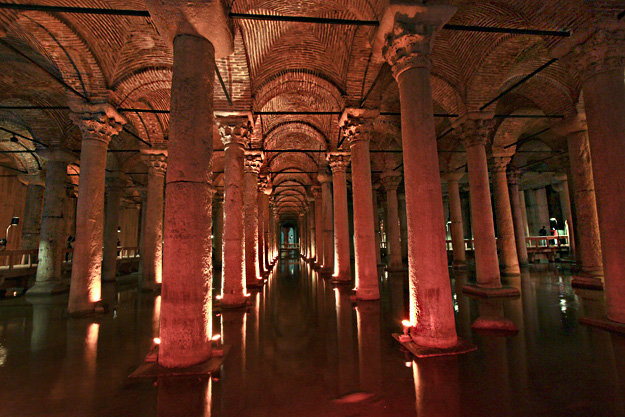
Tucked into a dark corner of the Basilica, two mysterious giant Medusa heads sit in quiet pools, one upside down, the other sideways. Although most experts concur that they were re-purposed from an ancient Roman building, opinions vary as to the reason they were placed in the cistern. Some believe they were simply the right size for the columns they support, however tradition holds that they were specifically placed to negate the power of the Gorgons, mythological Greek female creatures with hair of venemous snakes, who turned anyone who beheld them to stone. Like the Medusa heads, most columns were recycled from previous structures but one in particular appears to have been specially made for the cistern; tears carved into its length represent the more than 7,000 slaves who perished during construction of the cistern.
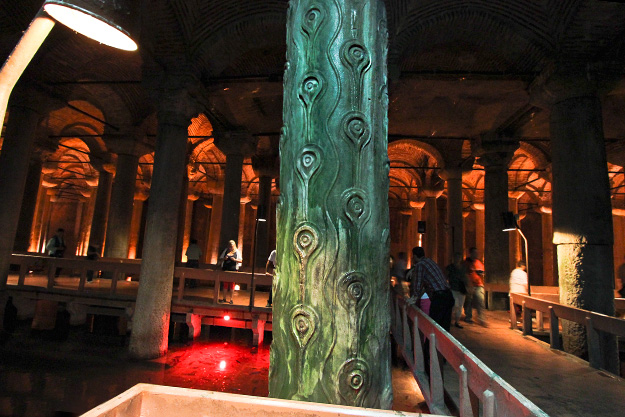
One lazy, sunny afternoon I strolled through Gulhane Park to a viewpoint overlooking the Bosphous. At an open-air cliffside cafe I sipped Turkish tea and watched ships from all over the world pass through the strait that connects the Black Sea to the Sea of Marmara, the Mediterranean, and seafaring destinations around the globe.
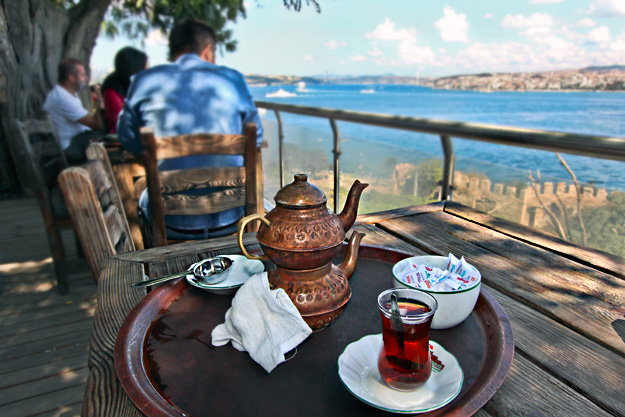
One entire day was devoted to Topkapi Palace, residence of Ottoman Sultans for nearly 400 years and still home to the Imperial Treasury. The 86 carat pear-shaped Spoonmaker’s Diamond, fourth largest of it’s kind in the world; two enormous gold candle holders mounted with 6,666 cut diamonds, brought to Istanbul from Mecca shortly before the fall of the Ottoman Empire; and the emerald-encrusted Topkapi Dagger are just three of the magnificent items displayed in its Treasury.
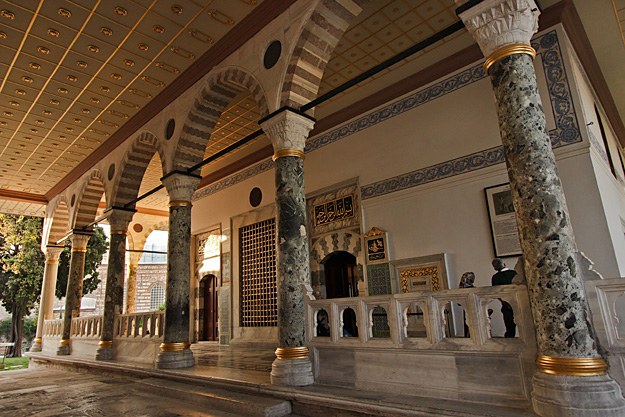
Stunning as these treasures were, I was more fascinated by the rooms of the Harem, where Queen Mothers – the first wife to present each Sultan with a child – ruled over the political intrigue and gossip that inevitably ensued in an environment where dozens of women competed for the attentions of a single man.
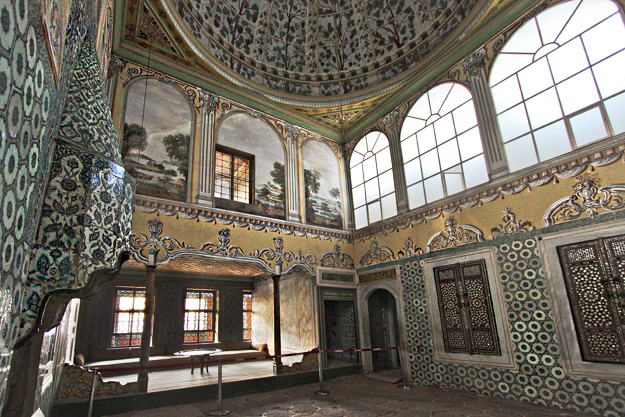
It quickly became apparent that a week would not suffice, so I cancelled my plans to visit other cities and spent 17 days just exploring Istanbul, Turkey. It was one of the best decisions I have ever made, not only because of the diversity of things to do in Istanbul, but also because the prices in Istanbul are eminently affordable. The spice market, cheese market, and Grand Bazaar led me on merry walks through neighborhoods of crooked cobblestone streets, but enjoyable and historic as these places were, I realized that the Old Town Sultanahmet area was tourist central. To fully experience the myriad things to do in Istanbul and more fully immerse in Turkish culture, I would need to get out into the neighborhoods.
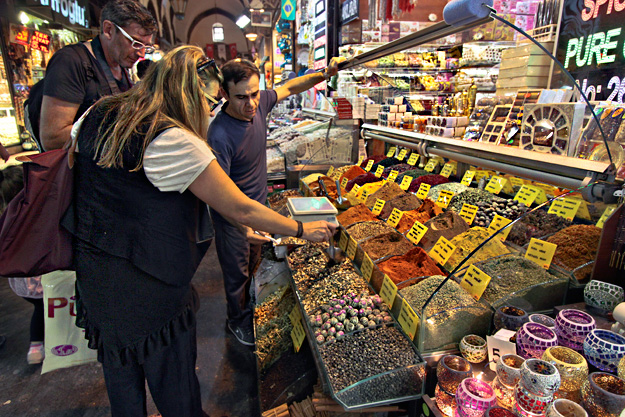
A cruise down the Golden Horn and Bosphorus acquainted me with other parts of the city and soon I was exploring further afield. In Eminönü, working class Turks hawked their wares from tiny stalls lining cramped streets, waited for ferries crossing the Golden Horn, or heeded the muezzin’s call to prayer at the New Mosque (Yeni Cami). Hoping to see the interior of the mosque before it was closed for afternoon prayers, I wrapped a scarf around my head and shoulders, removed my shoes, and stepped inside. As the Imam’s melodious chants resonated through the prayer hall, men streamed in from all directions and faced the Mihrab, a semicircular niche on the wall indicating the direction of the Kaaba in Mecca.
Worshipers scattered around the hall began performing a series of movements designed to emulate the method of prayer used by the Prophet Muhammad. With palms facing forward, each man touched his earlobes with his thumbs and crossed his arms over his heart. They bowed deeply from the waist before sinking to their knees and prostrating, touching forehead to the thick blue carpet. Suddenly, the Imam stopped chanting, signaling the start of the ritual prayer ceremony known as the Salaat. As one, the men moved forward onto the raised platform where the Imam sat and, with almost military precision, lined up shoulder-to-shoulder in rows, leaving just enough room between rows to prostrate during the ceremony. Surprisingly, I was allowed to remain for the entire ceremony.

Prior to arriving in Turkey, friends told me it was a liberal Moslem country, but I was unprepared for just how liberal. In addition to allowing non-Muslims to attend prayer services, I noted that alcohol is freely available and women have the legal right to attend university, hold jobs, vote, and hold political office. In 2002, Turkish law was revised to grant women equal rights in matters regarding marriage, divorce, and property. Turkish women are also free to dress as they choose, including everything from Western style tank tops and short dresses to traditional black burqas that cover everything but the eyes and hands. The majority of Turkish women, however, wear the hijab, a scarf that covers the head and shoulders, paired with an ankle-length coat, a choice that I would soon learn has as much to do with politics as it does fashion.

A few days later I crossed the Galata Bridge, where I was toasted by friendly fishermen who line the rails each day, trekked up Istikal Street to the Galata Tower and Taksim Square, and back downhill to the Istanbul Modern Art Museum. The museum’s Past and Future exhibition, a retrospective on the history of Turkish art, provided yet another surprise. Following the abolition of the sultanate in 1922, the newly created Republic’s first president, Atatürk, was determined to remake the former Ottoman Empire into a modern nation by separating State and religion. This would not be an easy task; with elements drawn from the Greek, Roman, Byzantine, Ottoman, European, Middle Eastern and Central Asian traditions and a landmass that spans both Europe and Asia, religion was the main unifying cultural force in Turkey.

Rather than attack Islam directly, he arranged for the government to pour huge resources into fine arts. Artists were sent to Paris to study European styles of painting and encouraged to bring back Western ideas. Inspired artists returned home and began reshaping Turkish culture through the images in their paintings and lectures on Western society. Much the same occurred in the field of literature. Writers, who had up until that time only written traditional Ottoman poetry and prose, began producing western-style novels and short stories. Using this as a springboard, Atatürk moved forward with his plans to secularize Turkey. Power to make policy was taken away from religious institutions; fundamental Islamic traditions, such as Sufism, were banned; Sharia law was replaced by European legal codes; and the Gregorian calendar replaced the Islamic calendar. Religious education was prohibited, as was the building of new mosques.

Although Atatürk successfully wrested power from Islamic institutions, he had not counted on the extent to which religion and prayer were woven into the fabric of Turkish life. The most despised of his reforms may have been the Hat Law of 1925, which made it illegal for men to wear the traditional conical red felt fez. Those who resisted were subject to imprisonment, hard labor, and in some cases were even executed. Though women were discouraged from wearing the veil, no specific laws prohibited them from wearing clothing with religious associations, perhaps because they were expected to follow the example of men. Taking advantage of this oversight, in the 1970’s women began wearing the hijab as a symbol of the widespread desire for a return to traditional religious practices. Worried that Turkey was moving back toward an Islamic state, in the 1980’s the government banned wearing of the headscarf in government offices, hospitals, universities, and schools. Women now had a choice; remove their scarves or lose the opportunity for an education or quality job.

Some found creative ways around the law. At the Istanbul Modern I watched a video about a young woman who was given an ultimatum: take off her scarf or be ejected from the university. Uncovering her head in public was a sin in the eyes of God, but refusal to remove it meant giving up any chance for a decent career. Ultimately she decided to wear a wig over her scarf, choosing a cheap blonde synthetic model to ensure everyone would know it was not her real hair. One week after I left Turkey, the ban was lifted for women who work in civil service or government, but it is still in force for women in the military or those holding judicial positions. Like most things in Turkey, reaction was mixed. Some hailed it as a human rights achievement while others decried it as the beginning of the end of secularism.

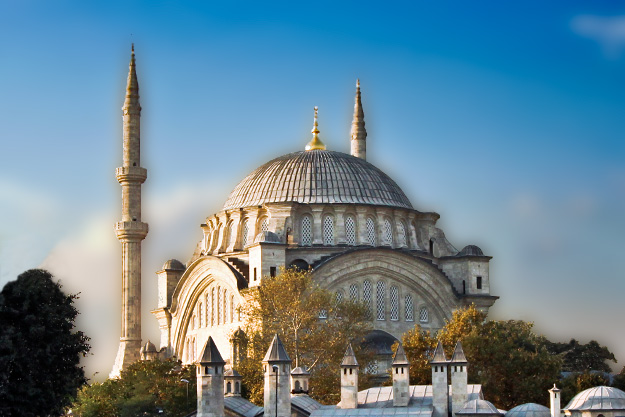
The complicated culture that simmers below the surface in Turkey is impossible for a newcomer to understand, so I stopped trying. Instead, I feasted on Meze plates that hailed from the Middle East, fresh vegetables influenced by Mediterranean cuisine, and topped off with traditional Turkish Delight and baklava for dessert. I was especially delighted to find a wide array of vegetarian Turkish food in a country where I had expected cuisine heavily focused on meat. I walked for miles along the waterfront, salivating over a skyline where ancient minarets reflect in blue-mirrored skyscrapers and palaces stand like enormous Rococo and Baroque wedding cakes. At the fish market I giggled at men in tall rubber boots tossing around fresh-caught fish, while trying desperately to keep my balance on the slime-covered asphalt. I accepted every single invitation (there were many) to join locals in a cup of Turkish tea and petted scores of the much-loved homeless cats that are fed by every merchant.

Christ Pantocrator is seated in the middle. On his right side stands emperor Constantine IX Monomachos; on his left side is empress Zoe.
On my final day I returned to the Hagia Sophia and looked at it through new eyes. Ongoing restorations have uncovered exquisite Christian mosaics beneath the plaster layer that was applied when Sultan Mehmet II converted it from a Basilica to a Mosque. More than 250 years later, Sultan Ahmed III renovated the crumbling plaster, saving the Christian artworks yet another time. I couldn’t help but wonder how and why they survived. As was the custom at the time Mehmet II conquered Constantinople, the Sultan allowed his troops to pillage for three days before claiming the city for himself. At the time of the second renovation, it was common for mosque workers to sell mosaics to visitors as talismans. I wrote it off as just another of the city’s unfathomable mysteries which, in their entirety, make Istanbul one of the most fascinating, intriguing destinations I’ve ever visited.
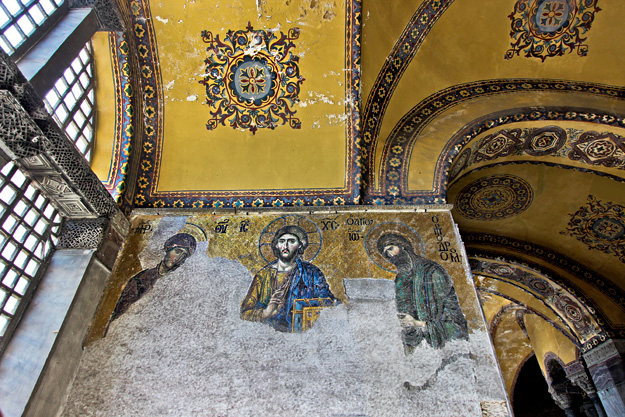
True Blue Tours kindly provided my tour of the Hagia Sophia, Blue Mosque, and Basilica Cistern. Though this tour was provided free of charge to the author, the receipt and acceptance of complimentary items or services will never influence the content, topics, or posts in this blog. I write the truth, the whole truth, and nothing but the truth.

You can see all tours and activities in Fethiye with Fethiye Tours
hi,
thank you for this article. It is good to find such detailed review about Istanbul. Only one thing, gulhane park tea cafe are not alive any more, because of securty reasons after accident last year it is closed, alternative is pier reloti
Thank you very much for letting me and my readers know about the closure of Gulhane Park Tea House. I find that very sad. It was a truly spectacular location. But it’s good to know there’s an alternative.
Hi Barbara, I would like to comment on your words about Turkish women being granted equal rights in 2002. Turkish women have gained some of their equal civil rights as early as 1847 and 1926. Since 1930 women in Turkey achieved suffrage which makes them one of the earliest in the World.
Tarhan, thanks so much for your comment. Very interesting; I am always fascinated by history.
Hi Barbara
I apologize if you get this twice. I saw it posted then I didn’t see it anymore. I am going to Istanbul next month and I am going to stay at Secondhome. I tried to book my stay through booking.com but I didn’t see availability for private rooms. I booked my room directly with Secondhome Hostel. Is there anyway you can get credit for the referral?
I enjoy your blog. I’m over 40 and never stayed at a hostel but reading your review helped me feel more comfortable.
Bisa
Hi Bisa: I answered you below, but wanted to add that I hope you will drop by the blog after you return from Istanbil and let me and all my readers know how you enjoyed your first experience in a hostel. I keep pushing them as wonderful, economical places to stay, so I’m very interested in your first impression.
Istanbul is one of the most intriguing cities I’ve ever visited. It’s the stop over point on flights from LA to Bodrum, and I’m a frequent visitor – and you’ve captured it’s essence! Smart move to extend your stay. I don’t think I’ll ever get bored of Istanbul. As well as all the sights, the city is a fascinating city to wander around. The water is it’s lifeblood, and I could sit for hours near the Galata Bridge just watching the boats maneuver around the water jostling for position.
We walk for miles when we visit – this city will definitely tire you out. One of the best ways to start off your trip to Istanbul, is a trip up to the top of the Galata Tower. From that vantage point you get a great overview of the city. It puts the location of the major sights in perspective, and gets you emotionally ready for Istanbul’s hills! (For the weak-kneed there’s a great public transport system)
So many people I talk too have misconceptions about Turkey. It’s a complex and difficult place to articulate – but you’ve conveyed it’s appeal wonderfully and hopefully inspired a few travelers to visit it for themselves.
thanks, Jay
Thank you so much for your comment Jay! I’m so pleased that you think I managed to capture the essence of Turkey, especially since, as you say, it is a complex culture. I thoroughly enjoyed my time in Istanbul and am looking forward to returning to see more of the country.
Hi, this is my second time on your nice blog, I had already subscribed your blog and when I got your new post in my mail box then I read with very careful theme & the biggest thing is that who does good things in it’ve been taking notes in my computer. Today, I have decided to go out at home and will purchase book about Istanbul if there will be available otherwise I”ll purchase online!!! Thanks for share!
Hi Seema: Thank you so much for taking time to leave a comment. I love hearing from my readers and am so glad you enjoyed my story about Istanbul. Hope you get to visit there someday.
To me, Istanbul has a mystique that few places can muster. Layers of history, culture and religion beautiful captured in this great article.
Thank you Mark! It was one of the most difficult stories I’ve ever written, simply because it’s very difficult to unravel such a complex culture in 17 days, but people are telling me they enjoy it so I must have done something right 🙂
I visited Istanbul in the early 80’s shortly after the movie Midnight Express came out (made by a Greek supposedly). I had horrific images in my mind – and worried a great deal beforehand about our safety – but was still keen to set foot in the country.
Istanbul was everything your post describes and more. It was the highlight of a multi month backpacking trip for my husband and myself. I would love to go back especially after looking at your wonderful photos.
Hi Leigh: I find that is the case a lot of the time. The media exaggerates bad news and we think a place is much more dangerous than it really is. There are certainly paces I wouldn’t visit at the moment – Iran, Syria, Afghanistan, Pakistan – but Istanbul was wonderful and safe.
LOVE LOVE LOVE your pictures of Istanbul, where I too spent a week exploring the very same places you’ve been. Saw your Girona, Spain pix too, another favorite place of mine. Would love to know what camera you are using.
Hi Wendy – what a lovely thing to say. I was using a Canon T3i for these shots, but recently bought a new Canon SL1, which is about the same, except that it’s much lighter weight.
Thanks for your response. I don’t know how you were able to capture images at Hagia Sofia without so many tourists in your shots. It was very crowded when I visited last June. Your photography is terrific.
Great piece! We visited Istanbul for the first time last year and similarly loved exploring all the various neighborhoods. You mention the Hat Law…did you by chance read the book “A Fez of the Heart”? An interesting history of modern Turkey as told via the fez.
What a quirky idea Laura – a book narrated by a hat. I’m going to have to look that one up!
Great roundup of Istanbul – a city with as many faces as it has cats. When I visited Istanbul a few years back, I was among local friends, mostly artists and creative folk, and was also surprised by the apparent liberalism and westernized appearance and tastes of much of its people – mainly the young, obviously. But I always felt something simmering underneath, just waiting to burst. The balance between secularist and islamic traditions is difficult to maintain, and constantly veers towards collapse whenever economical hardships join the fray. Thank you for this lovely piece. Great photos too! Good luck and safe travels!
Hi Lunaguava: Glad you enjoyed my story – it was somewhat difficult to write because of the complexity of the Turkish culture and history. I absolutely loved your comment that it’s “a city with as many faces as it has cats.” If I hadn’t already written it, I wolud have used it as my title.
Great post! The photos are stunning, once again.
Thanks, Dan! Very kind of you to say.
Istanbul looks such an interesting and colourful place. Must go soon.
It certainly is, Linda. Hope you get to go.
Even though Istanbul is one of my favorite cities in the world, and you’ve captured it beautifully, I think you would have loved many other parts of Turkey. I hope you make it back there sometime. There is so much to see. Love your photos!
Hi Corinne. I absolutely intend to go back and see more of Turkey. Erdine, Feithye, Izmir, Ephesus – so much history and beauty in that country.
Barbara… very nice article. It was very interesting to read about the secular and religious elements interacting in Istanbul. Seems that it is still a very complex issue over there and can be seen in everything the people do.
I also wanted to comment to let you know that I recreated this trip as a sort of travel plan on Wishbeen @ http://wishbeen.com/travelplans#!/plans/7268ebbd9aac087e . I hope you like it and it helps some of the people here and on our site to see a general guide around the city. Your article is very good and I hope more people see it. 🙂
Thanks again.. can’t wait to see your next post!
Thanks Leland. I’d be very honored if my article helped others with their trip planning.
Wow, nice post, Istanbul is in the top list of my travel list. Going next week……
James – Istanbul is stunning and I’m sure you’ll have a wonderful time. Have some roasted chestnuts for me 🙂
Istanbul and Turkey is such a complex place … I have to check it out the next time that I make it to the other side of the world!
Hi Jeremy: Hope you get to Istanbul. It is such a complex, fascinating, half-European/half-Asian city.
You’ve made me much more anxious to visit Istanbul than ever! Thanks for taking me there vicariously. This is one of your all-time best posts. Both the pictures and the text are marvelous. I hope you’re working on a book.
Libbie
Thank you Libbie! I am working on a book, but where to find the time is always a challenge.